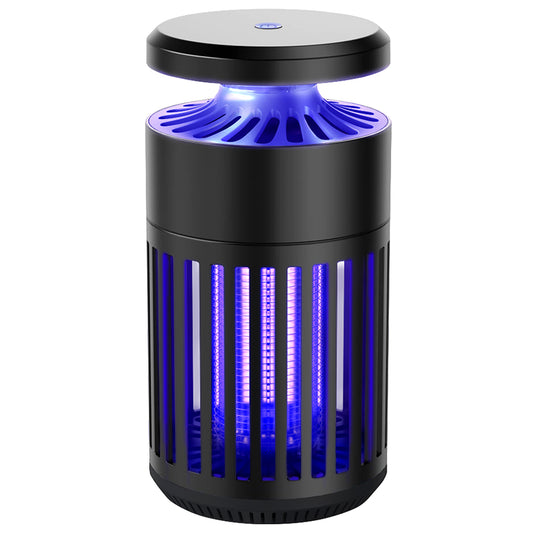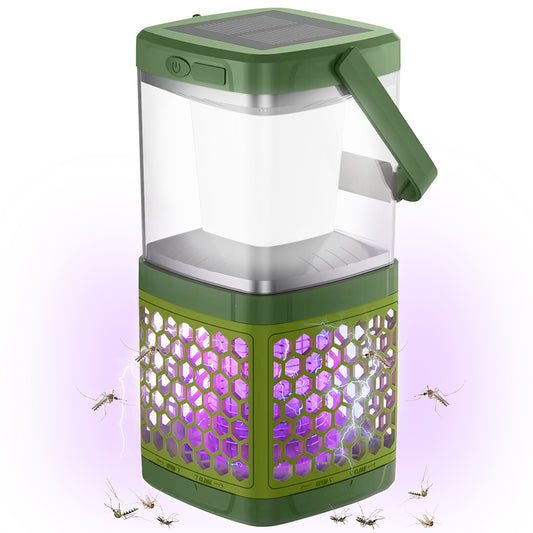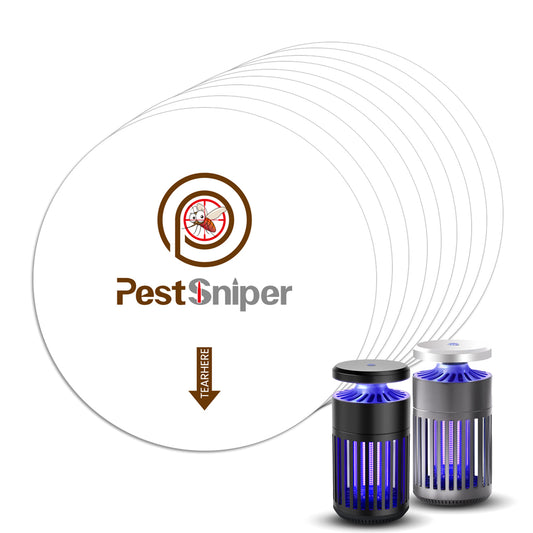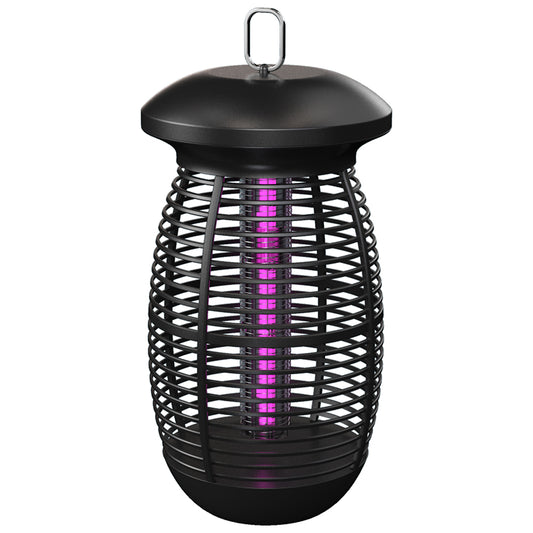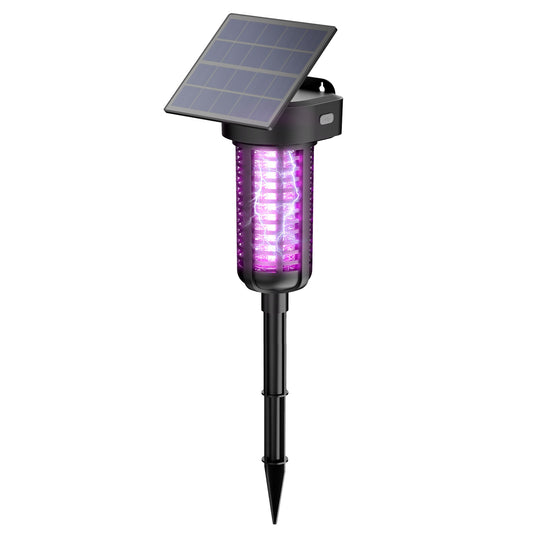Choosing the right bug zapper for indoor use can significantly improve your living space by reducing the presence of annoying and potentially harmful insects. With various models and features available on the market, it’s essential to understand what to look for to make an informed decision. This article will guide you through the key factors to consider when selecting an indoor bug zapper.
1. Coverage Area
The first factor to consider is the coverage area of the bug zapper. Indoor bug zappers are designed to work effectively within a specific range, usually measured in square feet. Determine the size of the room or area where you plan to use the zapper. For small to medium-sized rooms, a zapper with a coverage area of up to 500 square feet should suffice. Larger rooms may require a zapper with a greater range to ensure adequate coverage.
2. Type of Insects
Different bug zappers are designed to attract and eliminate specific types of insects. Consider the primary pests you want to target. While many indoor zappers effectively deal with flies, moths, and gnats, they may not be as effective against mosquitoes, which are attracted more to carbon dioxide than UV light. Some advanced models incorporate additional attractants, such as octenol, to improve their effectiveness against mosquitoes.
3. Light Source
The light source is a crucial component of a bug zapper. Traditional zappers use fluorescent UV bulbs, but newer models often feature LED lights. LED lights are more energy-efficient, have a longer lifespan, and can be equally effective in attracting insects. When choosing a zapper, consider the type of light source and its intensity. A stronger UV light can attract insects more effectively but may also be brighter, which could be a concern in bedrooms or living areas where a softer light is preferable.
4. Design and Safety
Safety is paramount, especially when using a bug zapper indoors. Look for models with a protective housing that prevents accidental contact with the electrified grid. This is particularly important if you have children or pets. The design should also allow for easy cleaning and maintenance. A removable collection tray for dead insects can simplify the cleaning process and ensure the zapper continues to function effectively.
5. Noise Level
Some bug zappers produce a noticeable noise when insects are electrocuted. While this might not be an issue in a noisy kitchen or garage, it can be disruptive in quiet areas like bedrooms or offices. Consider a zapper with a quieter operation if noise is a concern. Some models are designed to minimize noise, making them more suitable for indoor use.
6. Energy Efficiency
Energy consumption is another important factor, especially if you plan to use the zapper for extended periods. LED-based zappers are typically more energy-efficient than those using fluorescent bulbs. Check the energy rating and choose a model that balances effectiveness with low energy consumption.
7. Portability and Installation
Consider the portability and ease of installation of the bug zapper. Some models are lightweight and can be easily moved from one room to another, while others are designed for permanent installation. Wall-mounted or tabletop zappers can be more convenient for certain spaces. Ensure that the zapper comes with clear instructions and necessary hardware if installation is required.
8. Budget
Finally, consider your budget. Bug zappers are available in a wide price range, from affordable basic models to more expensive, feature-rich options. Determine your budget and choose a zapper that offers the best combination of features and performance within your price range. Remember that investing in a higher-quality zapper can pay off in terms of durability and effectiveness.
Choosing the right indoor bug zapper involves considering factors such as coverage area, target insects, light source, design, safety, noise level, energy efficiency, portability, and budget. By evaluating these aspects, you can select a bug zapper that effectively reduces indoor insect problems while fitting seamlessly into your living environment. A well-chosen bug zapper can enhance comfort and health by minimizing the presence of unwanted pests indoors.
1. Coverage Area
The first factor to consider is the coverage area of the bug zapper. Indoor bug zappers are designed to work effectively within a specific range, usually measured in square feet. Determine the size of the room or area where you plan to use the zapper. For small to medium-sized rooms, a zapper with a coverage area of up to 500 square feet should suffice. Larger rooms may require a zapper with a greater range to ensure adequate coverage.
2. Type of Insects
Different bug zappers are designed to attract and eliminate specific types of insects. Consider the primary pests you want to target. While many indoor zappers effectively deal with flies, moths, and gnats, they may not be as effective against mosquitoes, which are attracted more to carbon dioxide than UV light. Some advanced models incorporate additional attractants, such as octenol, to improve their effectiveness against mosquitoes.
3. Light Source
The light source is a crucial component of a bug zapper. Traditional zappers use fluorescent UV bulbs, but newer models often feature LED lights. LED lights are more energy-efficient, have a longer lifespan, and can be equally effective in attracting insects. When choosing a zapper, consider the type of light source and its intensity. A stronger UV light can attract insects more effectively but may also be brighter, which could be a concern in bedrooms or living areas where a softer light is preferable.
4. Design and Safety
Safety is paramount, especially when using a bug zapper indoors. Look for models with a protective housing that prevents accidental contact with the electrified grid. This is particularly important if you have children or pets. The design should also allow for easy cleaning and maintenance. A removable collection tray for dead insects can simplify the cleaning process and ensure the zapper continues to function effectively.
5. Noise Level
Some bug zappers produce a noticeable noise when insects are electrocuted. While this might not be an issue in a noisy kitchen or garage, it can be disruptive in quiet areas like bedrooms or offices. Consider a zapper with a quieter operation if noise is a concern. Some models are designed to minimize noise, making them more suitable for indoor use.
6. Energy Efficiency
Energy consumption is another important factor, especially if you plan to use the zapper for extended periods. LED-based zappers are typically more energy-efficient than those using fluorescent bulbs. Check the energy rating and choose a model that balances effectiveness with low energy consumption.
7. Portability and Installation
Consider the portability and ease of installation of the bug zapper. Some models are lightweight and can be easily moved from one room to another, while others are designed for permanent installation. Wall-mounted or tabletop zappers can be more convenient for certain spaces. Ensure that the zapper comes with clear instructions and necessary hardware if installation is required.
8. Budget
Finally, consider your budget. Bug zappers are available in a wide price range, from affordable basic models to more expensive, feature-rich options. Determine your budget and choose a zapper that offers the best combination of features and performance within your price range. Remember that investing in a higher-quality zapper can pay off in terms of durability and effectiveness.
Choosing the right indoor bug zapper involves considering factors such as coverage area, target insects, light source, design, safety, noise level, energy efficiency, portability, and budget. By evaluating these aspects, you can select a bug zapper that effectively reduces indoor insect problems while fitting seamlessly into your living environment. A well-chosen bug zapper can enhance comfort and health by minimizing the presence of unwanted pests indoors.


